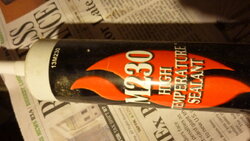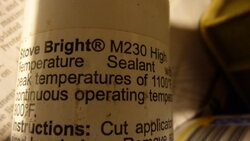Lloyd the redneck
Feeling the Heat
Not that it's super relevant, but the door gasket material in the oil boiler refractory replacement kit I installed this Fall had adhesive already on the gasket-you just peeled it off.
All the boiler doors I do have that sticky back but I just use red devil high temp silly cone I don't trust tape. Red devil industries red , I use it to seal all chimney joints and put in the rope/flat gaskets. Never have had an issue with it not taking the heat.









 : what do your stoves use for gaskets ?
: what do your stoves use for gaskets ?